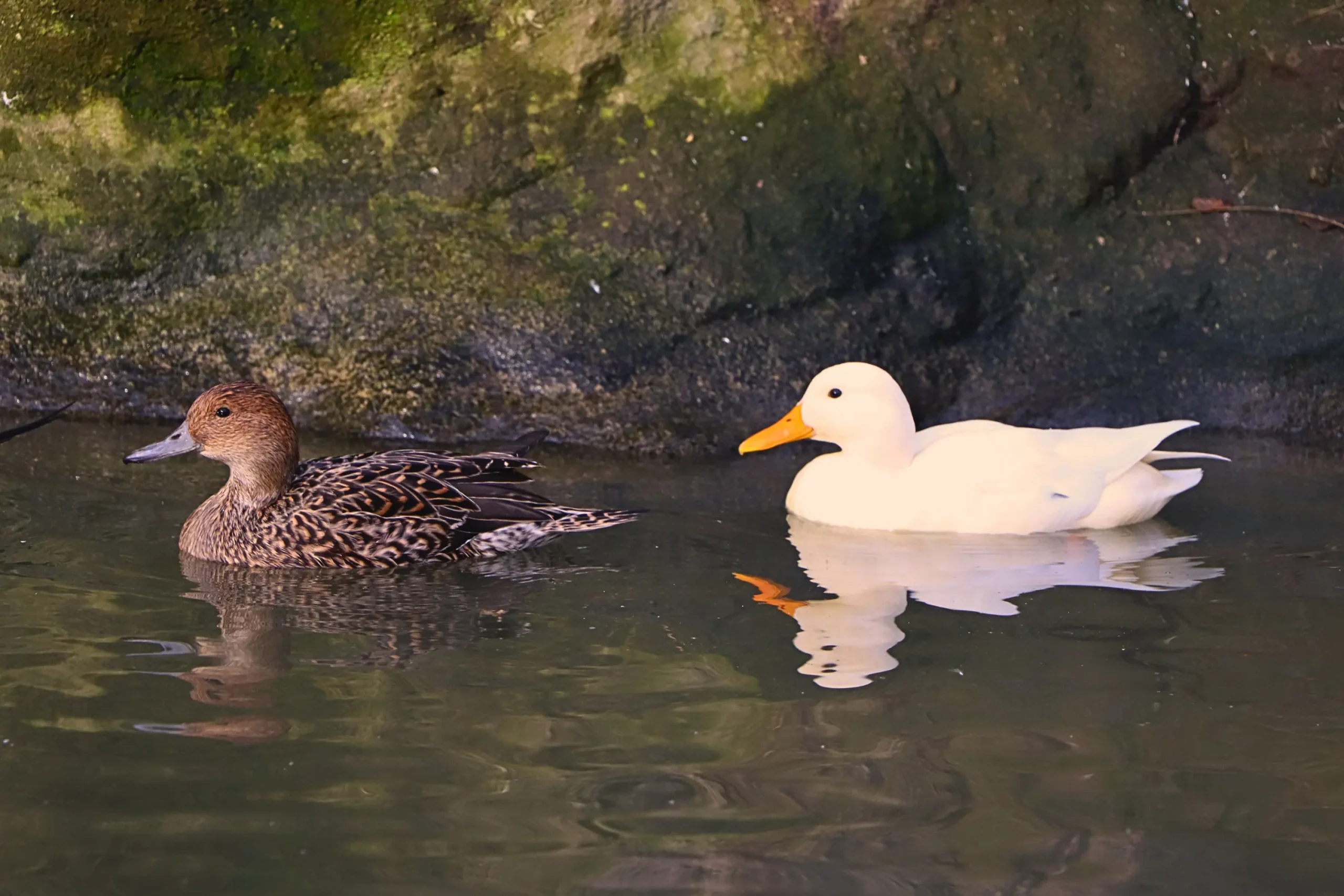One of our wild ducks—more precisely, a mallard—has undergone a remarkable transformation over the past year. Over two molting cycles, the female replaced her typically brown-patterned plumage with white feathers. The other wild ducks have accepted their companion’s color change without issue.

Mallards, commonly known as wild ducks, are well-known birds among the general public. Most people recognize that females typically have brown, patterned camouflage plumage, while males—especially in their breeding plumage—boast striking, iridescent green feathers on their heads and necks.
However, among the mallards in one of Bagolyvár’s aviaries, there is one that is almost entirely white. At first glance, an observer might think that a domestic white duck has somehow mixed in with the wild ducks. However, upon closer inspection, it becomes clear that in terms of body shape and structure, this bird is identical to the other mallards—only its feathers are an unusual white.
Although mallards typically have distinct coloration, individuals with abnormal plumage do occur. Some of these cases exhibit signs of leucism, a condition where certain pigments are absent from their feathers. Because of this, female mallards sometimes have only faint, light brown, or grayish patterns instead of their usual markings, and fully white wild ducks—both male and female—have been observed in Hungary and other places in the wild.
In the case of our white wild duck, we know its story well, as we have tracked its development since it was a duckling. Initially, it looked just like its siblings, and even at one year old, it had the same plumage as any young female. However, after its first molt, it began replacing its characteristic brown-patterned feathers with white ones—first on its head and the front of its body, and then, after the next molt, all over.
It would be an exaggeration to say that the bird “turned gray” with age. This kind of color change has been observed occasionally in wild ducks, though the exact causes remain unclear. One possibility is that this particular mallard may not be 100% pure wild duck—one of its distant ancestors may have belonged to another duck species. Mallards are known to hybridize with other duck species, sometimes producing fertile offspring. In fact, they have been known to interbreed with at least forty different species. Such genetic backgrounds can increase the likelihood of unusual coloration appearing in their descendants. However, such mutations can also occur independently. After all, even among domestic duck breeds developed by humans, white varieties exist. Since domestic ducks descend from wild mallards, the genetic “recipe” for white plumage must still be present somewhere in the mallard’s DNA.
According to the caretakers, while the other mallards were initially a bit puzzled by their companion’s color change, they have fully accepted it. They continue to interact with the white-feathered mallard just as they would with any other familiar wild duck.